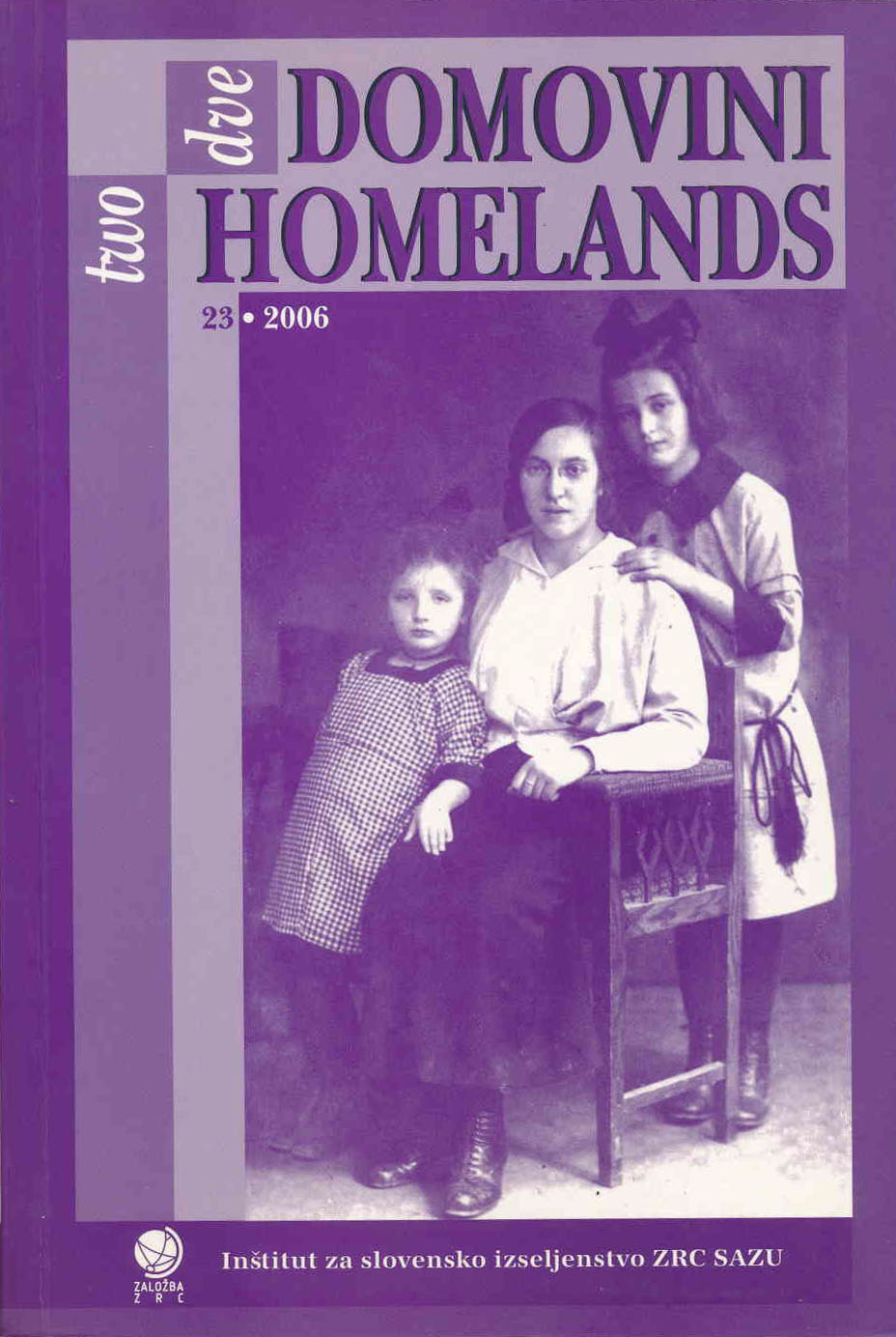THE STANDING OF SLOVENIAN WOMEN IN PORABJE IN TOWN ENVIRONMENTS (THE CASE OF SZOMBATHELY)
Keywords:
Hungary, Slovenian minority, interior emigration, cultural and political organisationsAbstract
Presented in the article are the preset results of a field research titled “The position of Slovenes outside the territory of autochthon settlement – the case of Slovenes in Szombathely” with emphasis on the position of Slovenian women, which was carried out in the year 2002.
The objectives of the research were to determine and evaluate above all the grounds for the emigrating of Slovenian from Porabje to town areas in Hungary in different periods, to register difficulties individuals were forced to confront with in majority environments in view of national appurtenance, and to study primarily those socialisation factors (minority organisations, media, family) that (can) contribute to the preserving of ethnic characteristics.
A qualitative analysis of personal interviews with nine Slovenian women from Porabje indicates that the majority of them (mainly members of the younger generation) have moved to Szombathely in the 80s of the 20th century while the rest (above all of the older generation) from the second half of the 40s to the 70s of the 20th century. Among causes, the majority stressed the economic factor, only in few cases motives were political, marriage, transfer of spouse to Szombathely, and similar.
The majority did not have negative experiences because of national appurtenance except one woman of the older generation who did not dare speak with her Slovenian co-worker in the Porabje dialect due to fear of consequences.
Positive changes in the sphere of legal protection of minorities in Hungary contributed at the beginning of the 90s to political and cultural organizing, first in Porabje and in Budapest, and after the adoption of the Law on national and ethnic minorities in Hungary (1993) in other regions in Hungary as well, above all in larger towns (among which belongs Szombathely). The founding and the activity of the Slovenian minority self-management and the Slovenian cultural society Avgust Pavel in Szombathely witness on vitality of this dispersed town community.
The analysis of personal interviews confirms that Slovenian women in Szombathely are in comparison to Slovenian men in Szombathely more active in the process of preservation of ethnic characteristics and in mediating those to the younger generations as well.
Downloads
References
Bufon, Milan (1992). Prostorska opredeljenost in narodna pripadnost. Trst, 223 str.
Kovàcs, Attila (2003). Številčni razvoj Slovencev na Madžarskem v luči zgodovinskih dogodkov in pričevanj anketirancev v Sombotelu. Razprave in gradivo, 43, str. 164-184.
Kozar-Mukič, Marija (1984). Slovensko Porabje. Etnološka topografija slovenskega etničnega ozemlja - 20. stoletje. Ljubljana-Szombathely, str. 12-13, 39-40.
Munda Hirnök, Katalin (2003). Organiziranost, mediji in stiki Slovencev v Szombathelyu/Sombotelu. Razprave in gradivo, 43, str. 150-162.
Munda Hirnök, Katalin (1992). Vzroki in razvoj poljedelskega zaposlovanja med porabskimi Slovenci na Madžarskem. Razprave in gradivo, 26/27, str. 238-248.
Nečak Ltik, Albina (1998). Jezik in etnična pripadnost v Porabju. Medetnični odnosi in narodna identiteta v slovenskem etničnem prostoru I. Izsledki projekta, (ur. Albina Nečak Liik, Boris Jesih). Ljubljana: Inštitut za narodnostna vprašanja, str. 248.
Népszàmlàlas 2001. 4. Nemzeti kotodés, A nemzeti, etnikai kisebbségek adatai, Budapest, 2002.
Zupančič, Jernej (1999). Slovenci v Avstriji. Geographica Slovenica 32. Ljubljana: Inštitut za geografijo, 246 str.
Zupančič, Jernej (2000). Slovenci na Madžarskem. Razprave in gradivo, 36/37, str. 125-143.
Downloads
Published
How to Cite
Issue
Section
License

This work is licensed under a Creative Commons Attribution-NonCommercial-NoDerivatives 4.0 International License.
Authors guarantee that the work is their own original creation and does not infringe any statutory or common-law copyright or any proprietary right of any third party. In case of claims by third parties, authors commit their self to defend the interests of the publisher, and shall cover any potential costs.
More in: Submission chapter





